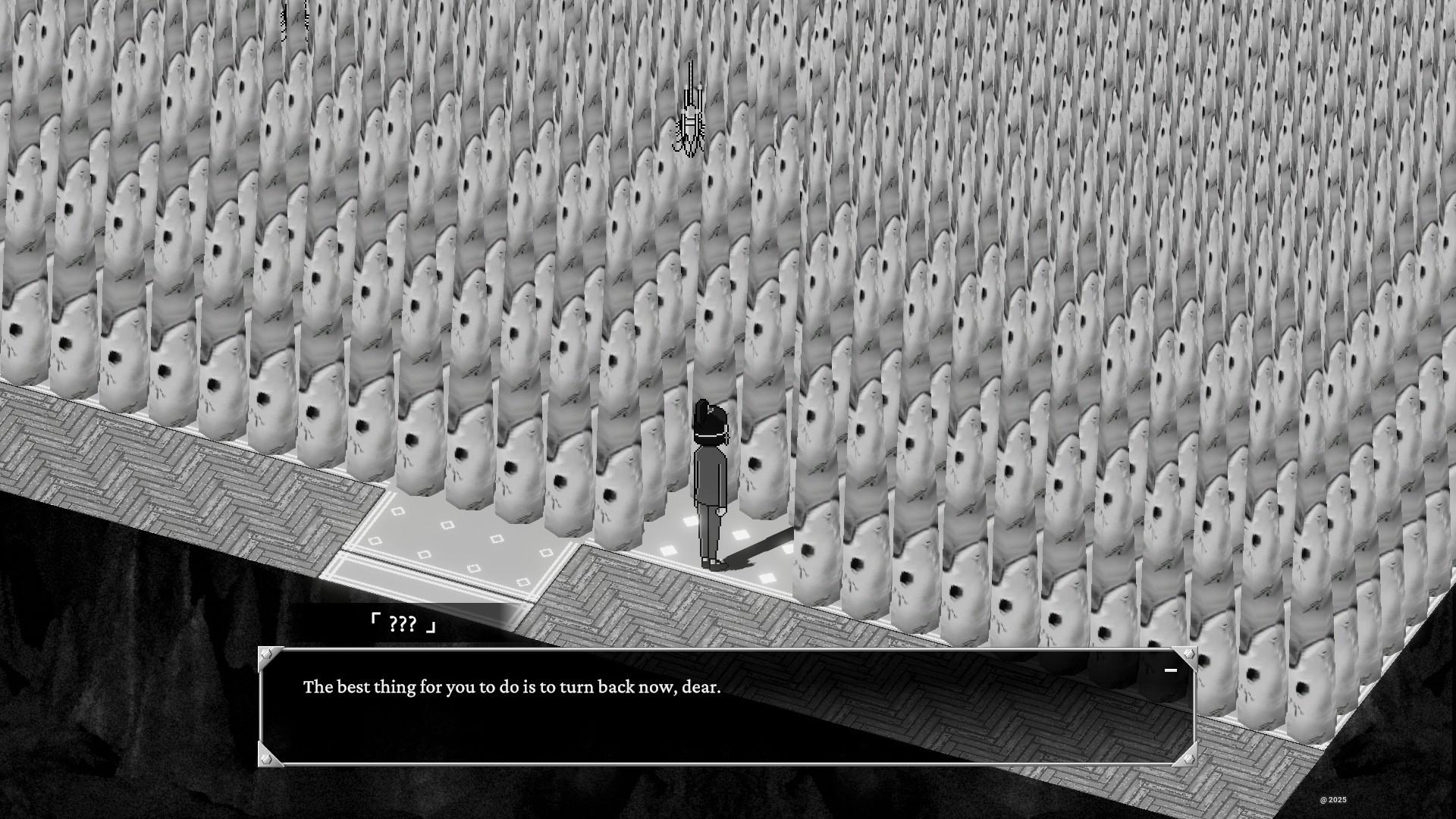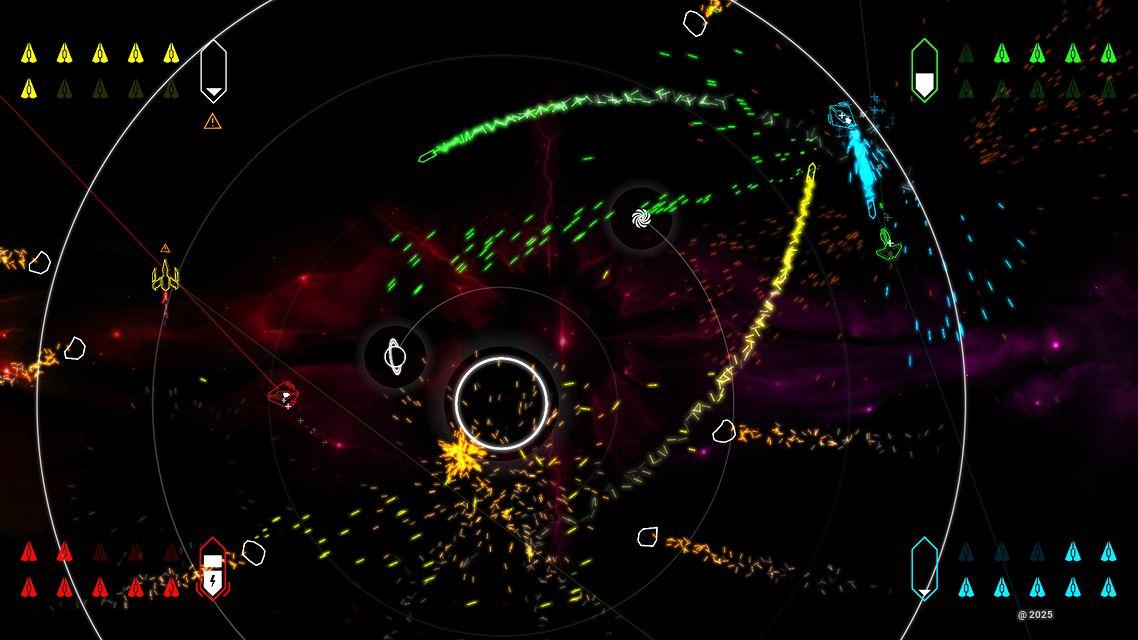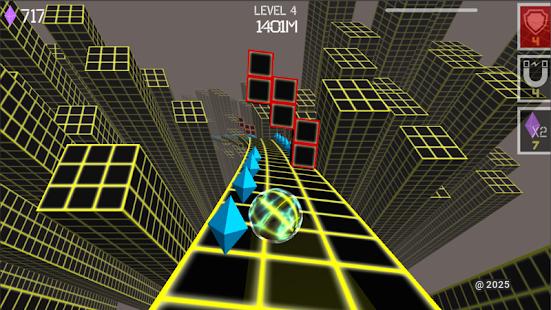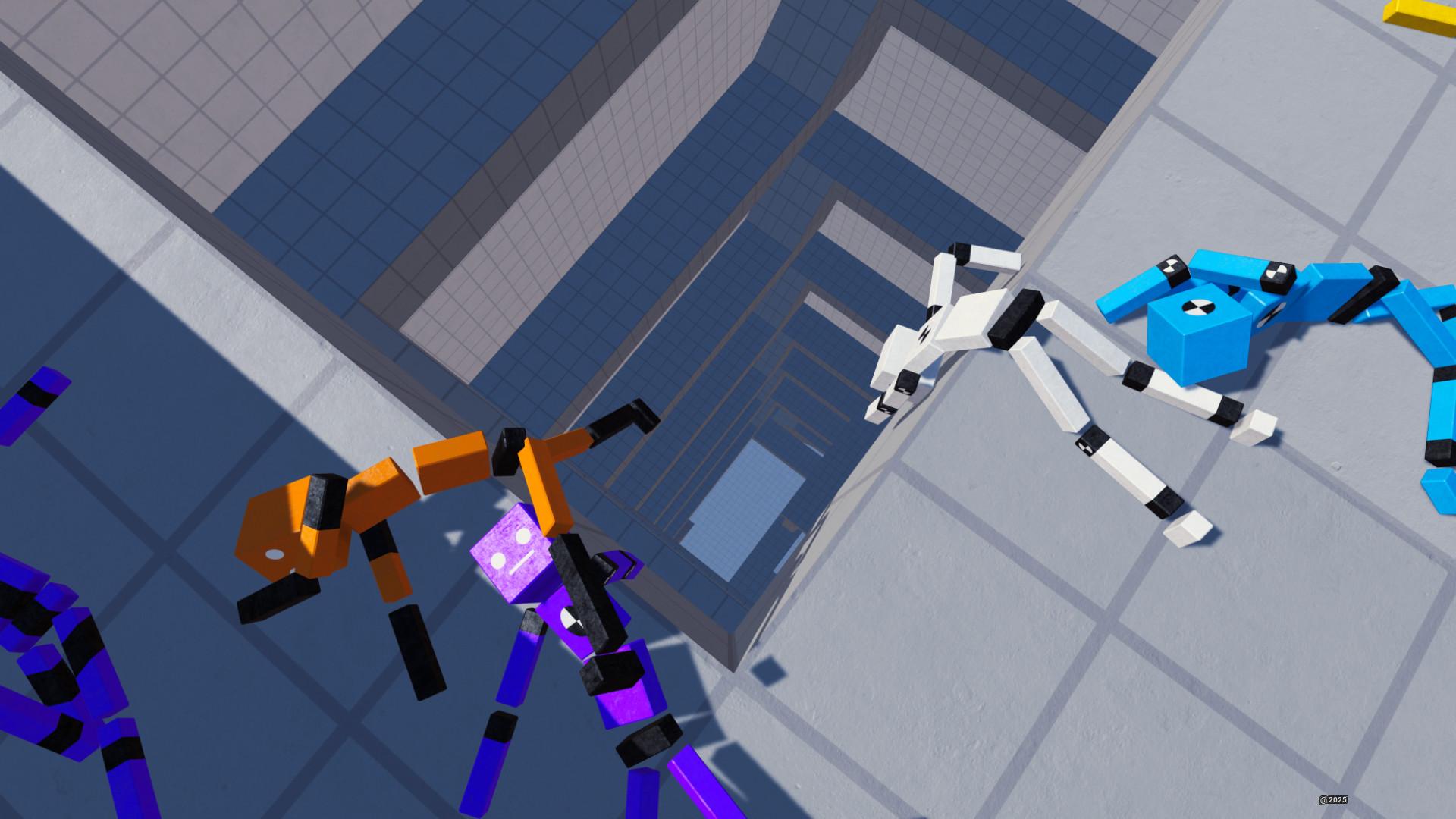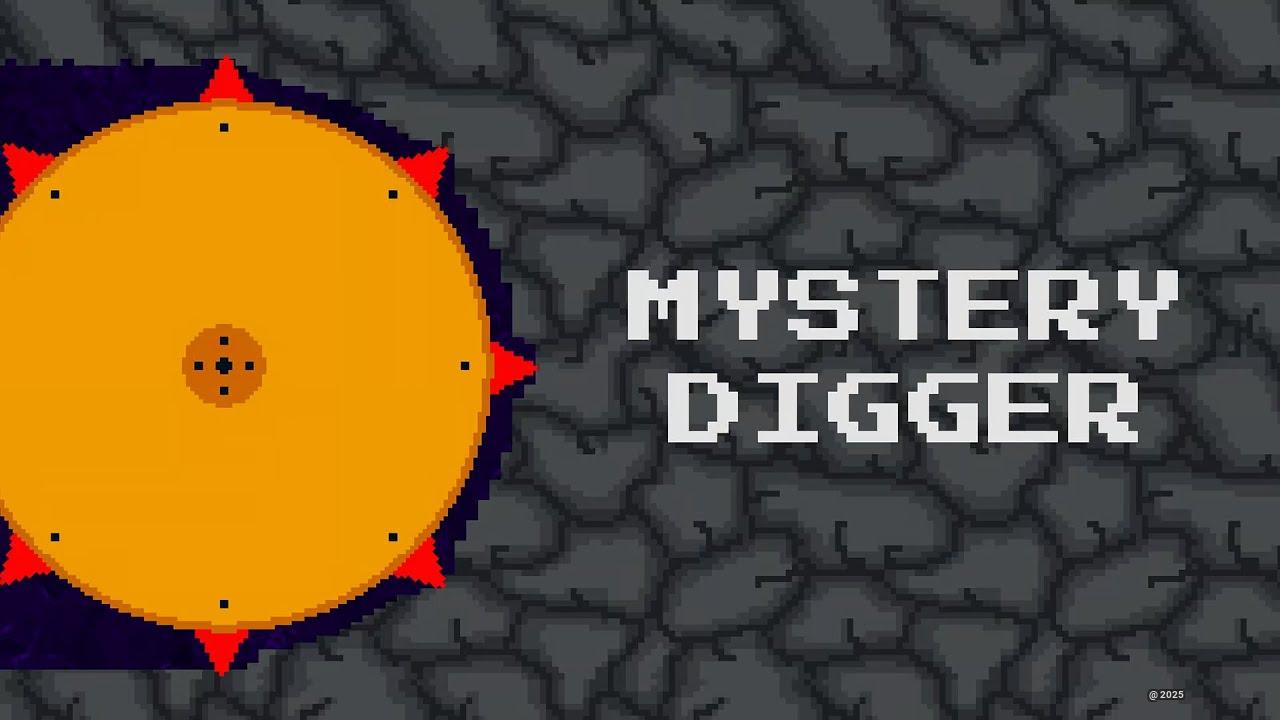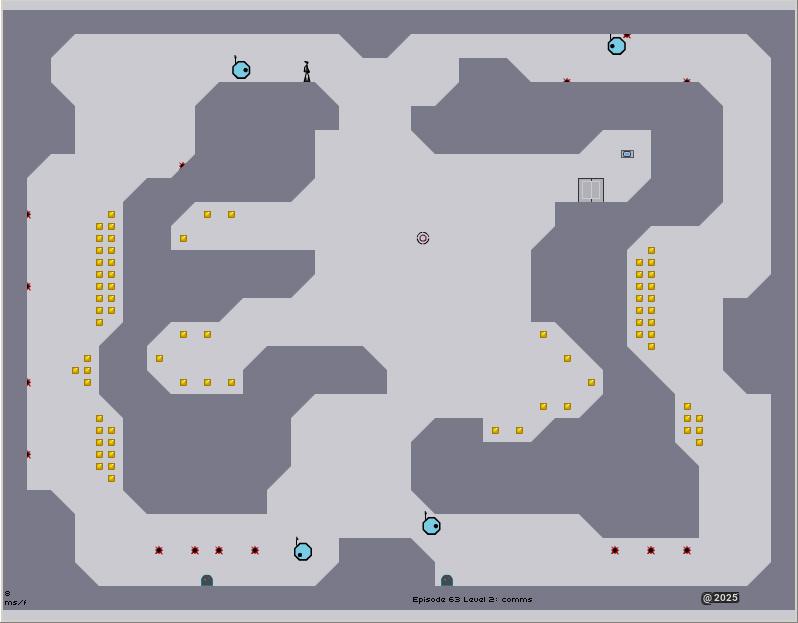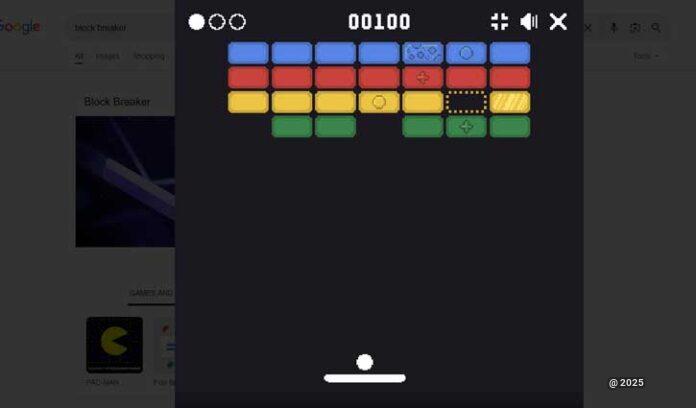Dark Loop revolutionizes the traditional platform game format by creating an ingenious puzzle experience where familiar settings become increasingly challenging playgrounds for creative problem-solving.
Imagine being stuck in what appears to be a simple room - just you, a door, a button, and a platform. Sounds basic, right? Wrong. Dark Loop takes this deceptively simple setup and transforms it into a mind-bending adventure where nothing is quite what it seems. Each time you step into the same room, you’ll face new challenges that force you to think outside the box and question everything you thought you knew about gaming mechanics.
Key aspects that make Dark Loop stand out:
- Recurring environments that present different challenges each time
- Trap-filled rooms that require quick thinking and adaptability
- Minimalist design that masks complex gameplay mechanics
- Progressive difficulty that builds upon previous solutions
- Multiple solution paths that reward creative thinking
The beauty of Dark Loop lies in its ability to make players question their assumptions. While the environment remains constant, the solutions evolve, creating a psychological puzzle that challenges both reflexes and reasoning.
This isn’t just another platform game - it’s a test of mental agility where success depends on your ability to see beyond the obvious and embrace unconventional approaches.
What Is Dark Loop?
Dark Loop is a mind-bending puzzle platformer that puts a fresh spin on the genre. I’ve spent countless hours exploring its deceptively simple premise - you’re trapped in what looks like the same room over and over, but each time you enter, the solution changes completely.
The game drops you into a minimalist space with just a few key elements - a door beckoning you to escape, a button that might help you get there, and a jumping platform that could be your salvation or doom. But don’t let the basic setup fool you! The real challenge comes from the ever-changing puzzle mechanics that force you to think in new ways each time.
What makes Dark Loop truly special is how it messes with your expectations. You might solve one puzzle by timing your jumps perfectly, only to find that same approach fails miserably on your next attempt. The game keeps you on your toes by introducing subtle variations that require completely different solutions.
| Core Element | Purpose |
|---|---|
| Door | Main escape route that players must reach |
| Button | Triggers various mechanisms and effects |
| Jump Platform | Key movement tool with changing properties |
| Traps | Obstacles that require creative solutions |
Features Of Dark Loop Game
The game packs several innovative features that set it apart from typical platformers. First up is the dynamic difficulty system - instead of static level progression, the challenge adapts based on how you play. I’ve noticed the game learning from my solutions and throwing new curveballs my way.
The visual design deserves special mention. While the room may look basic at first glance, the lighting effects create an atmosphere of mystery and tension. Shadows dance across walls as you move, and successful solutions trigger satisfying visual feedback that makes each victory feel earned.
Here’s what makes Dark Loop stand out:
- Time manipulation mechanics that affect how objects and platforms behave
- Reactive environments that respond to player actions in unexpected ways
- Progressive puzzle complexity that builds on previous solutions
- Hidden secrets and alternate paths for the truly curious
- A subtle but engaging narrative that unfolds through environmental storytelling
Platform games often rely on increasing difficulty through new obstacles, but Dark Loop takes a different approach. The challenge comes from having to unlearn solutions that worked before and discover new ways to tackle familiar spaces.
How to Play Dark Loop Game?
The basic controls are straightforward - you can move, jump, and interact with objects. However, the real skill comes from understanding how these simple actions can be combined in clever ways.
Let’s break down the core gameplay loop:
- Enter the room and survey your surroundings
- Identify the current behavior of platforms and traps
- Test different approaches to reaching the exit
- Learn from failed attempts
- Adapt your strategy based on changing conditions
One key tip I’ve learned: don’t get too attached to any single solution. What worked in your last run might be completely useless in the next. Instead, focus on understanding the underlying rules of each variation.
“The beauty of Dark Loop lies in its ability to make you question everything you think you know about puzzle games.” - Gaming Chronicles Review
Strategies for Success in Dark Loop
After countless runs through Dark Loop’s ever-changing rooms, I’ve developed some reliable strategies for success. The key is maintaining a flexible mindset and being willing to experiment with unconventional approaches.
Here are some proven tactics:
- Observation First: Spend time watching how objects interact before making your move
- Pattern Recognition: Look for subtle clues in the environment that hint at possible solutions
- Quick Reset Mentality: Don’t be afraid to restart if your current approach isn’t working
- Environmental Testing: Try interacting with everything - even seemingly useless objects might be key
| Common Challenge | Recommended Approach |
|---|---|
| Timing-based puzzles | Watch full pattern cycle before attempting |
| Platform puzzles | Test jump heights and distances systematically |
| Button sequences | Map out cause and effect relationships |
| Trap avoidance | Look for safe zones and timing windows |
Similar Games
Final Words
Dark Loop stands as a masterpiece of puzzle design, turning a basic room setup into an intricate mental playground. Through my time with the game, I’ve seen how it transforms standard platforming into something extraordinary - each visit to the same space brings fresh challenges that demand creative solutions.
The game’s strength lies in its psychological element. Players face a constant stream of new puzzles within identical surroundings, forcing them to question their assumptions and adapt their strategies. The minimalist environment masks sophisticated mechanics that reward both quick thinking and careful planning.
What makes this game special? It’s the perfect blend of familiar elements and unpredictable challenges. Each room contains the same components - a door, a button, and platforms - yet requires completely different approaches to solve. This design creates an addictive loop where success depends on mental flexibility rather than memorized patterns.
Players who’ve mastered Dark Loop know that the real challenge isn’t just reaching the exit - it’s discovering how many different ways you can get there.
The game continues to surprise even experienced players, proving that sometimes the most engaging puzzles come wrapped in the simplest packages.

